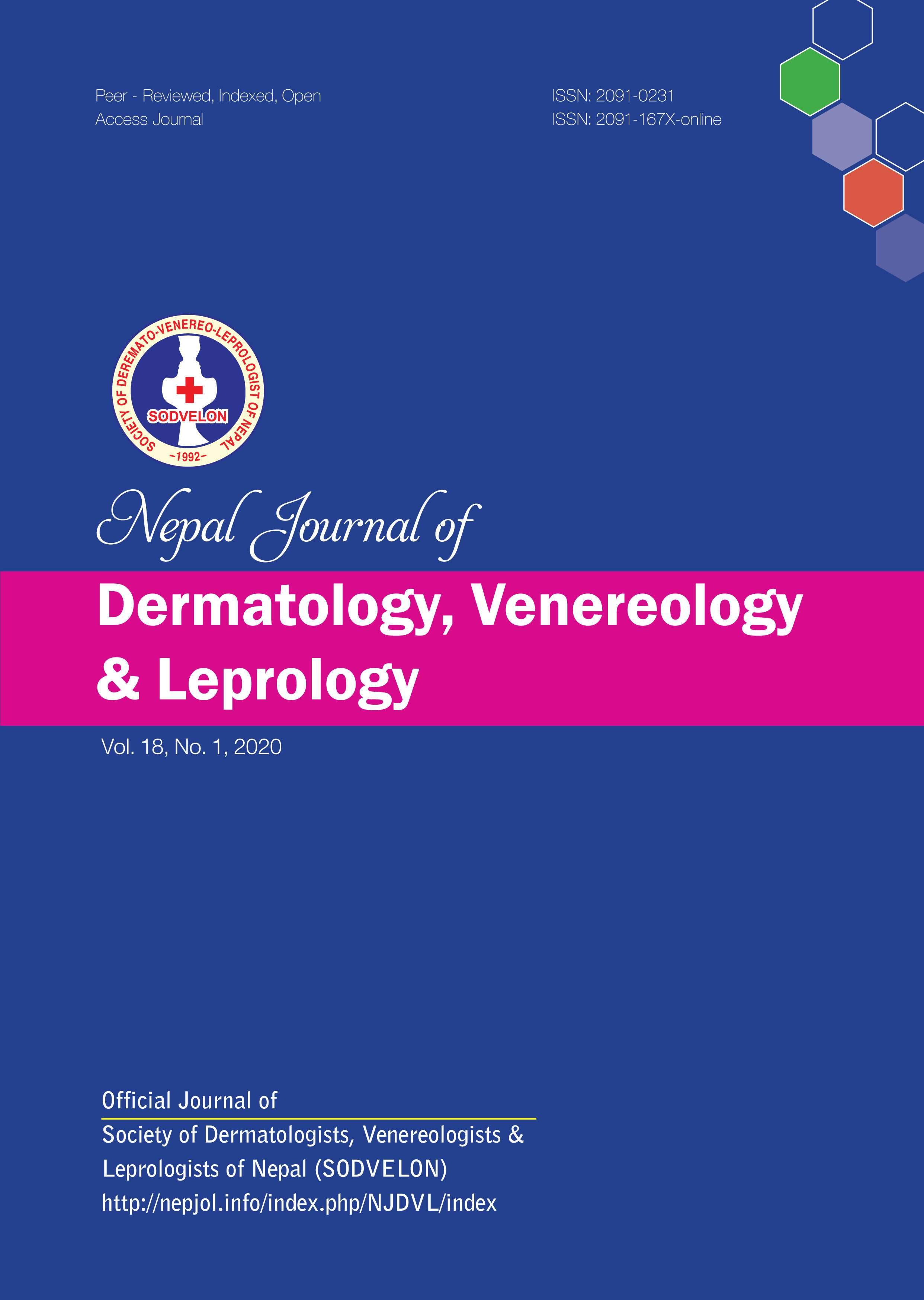Non-Veneral Genital Dermatoses: A Study from Western Nepal
DOI:
https://doi.org/10.3126/njdvl.v18i1.30313Keywords:
Neurodermatitis, Sexually Transmitted Diseases, Dermatitis, Allergic ContactAbstract
Introduction: The etiology of dermatoses involving genital areas could be venereal or on-venereal. These disorders are responsible for mental distress and guilt which can be minimized by appropriate diagnosis and information to the patients.
Objectives: To assess the clinical pattern and prevalence of various non venereal genital dermatoses in a referral center.
Materials and Methods: This was a hospital-based descriptive study involving patients with non-venereal diseases visiting outpatient clinics of Department of Dermatology. After informed consent, all the parameters were recorded in a proforma and analyzed.
Results: Total of 70 patients with non-venereal genital dermatoses were included. Mean age of the patients was 33 years. Majority were male, married and had history of irregular use of contraceptives. Duration of symptoms ranged from one to 36 months with mean of four months.
Total 19 types of non-venereal skin diseases were noted with major complaint of itching in genitalia in 22 (31.4%). Primary site of involvement/complaint was vulva in 19 (27.1%), scrotum in 17 (24.3%), groin in 18 (25.7%) and penile area in 14 (20.0%). The most common final dermatological diagnosis in majority was fungal infections and neurodermatitis in 12.9% each. Extramarital relationship was reported by 37 out of 70 patients (52.9%), while 31 patients correlated their symptoms with sexual exposure.
Conclusions: Itching was the most common presenting complaint with infective etiology. The current study highlighted the relevance of addressing non-venereal genital dermatoses in order to avoid the general misconception that all genital lesions are sexually transmitted.
Downloads
Downloads
Published
How to Cite
Issue
Section
License
Copyright on any research article is transferred in full to Nepal Journal of Dermatology, Venereology & Leprology upon publication. The copyright transfer includes the right to reproduce and distribute the article in any form of reproduction (printing, electronic media or any other form).




